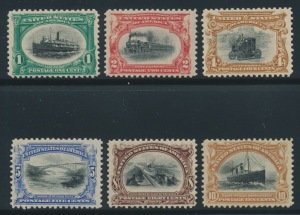At the turn of the twentieth Century, the Post Office of the United States was under constant criticism from philatelists because of our stamp issuing policy. The Post Office had decided to commemorate the 1893 Columbian Exposition with a long commemorative set, and the set they produced (Scott #230-245) had a face value of over $16 (the average weekly wage that year was less than $10). The Columbian set was just part of the high cost of collecting in the 1890s. In the mid-1890s, the Post Office had issued a long definitive set with a postage value of over $10. And a few years later, the set was reissued on watermarked paper. To philatelists, watermarked stamps represent completely different varieties than unwatermarked, and so collectors had to pony up another $10. The 1898 Trans Mississippis added another $3.50. To keep up with the issues of the 1890s, collectors had to spend over $40. In 2010 terms, this represented the equivalent wages of over a month or nearly $4,000 for the average American worker today. In real terms, the number was astronomical. But it felt even more so to collectors of the day by the fact that until 1893 new stamp issues were few and far between. From 1870-1890, the basic stamp designs never changed. To have to continually buy expensive new issues was not something collectors were happy about.
For the 1901 commemorative set then, the Post Office decided to give collectors a break. They issued a six stamp set with an affordable face value of 30¢. And to add to the appeal of the stamps, they were issued bicolored, the first such stamps in over thirty years since the high values of the 1869s. The stamps were an instant success with collectors and with the general public. On sale at the Pan American Exposition in Buffalo, the stamps were also on sale on the first day of May 1, 1901 around the country. A collector friend of mine once made a great find. He bought a small box of covers, and in the box was a small envelope with a 2¢ Pan American with a return address of the Gimbel Brothers department store. The date on the envelope was May 1, 1901 which made the cover a First Day Cover. Inside the envelope was the addressee’s monthly bill from Gimbels. The woman never knew it, but Gimbels, when asking her for $3.12 payment, had sent her a philatelic rarity.

